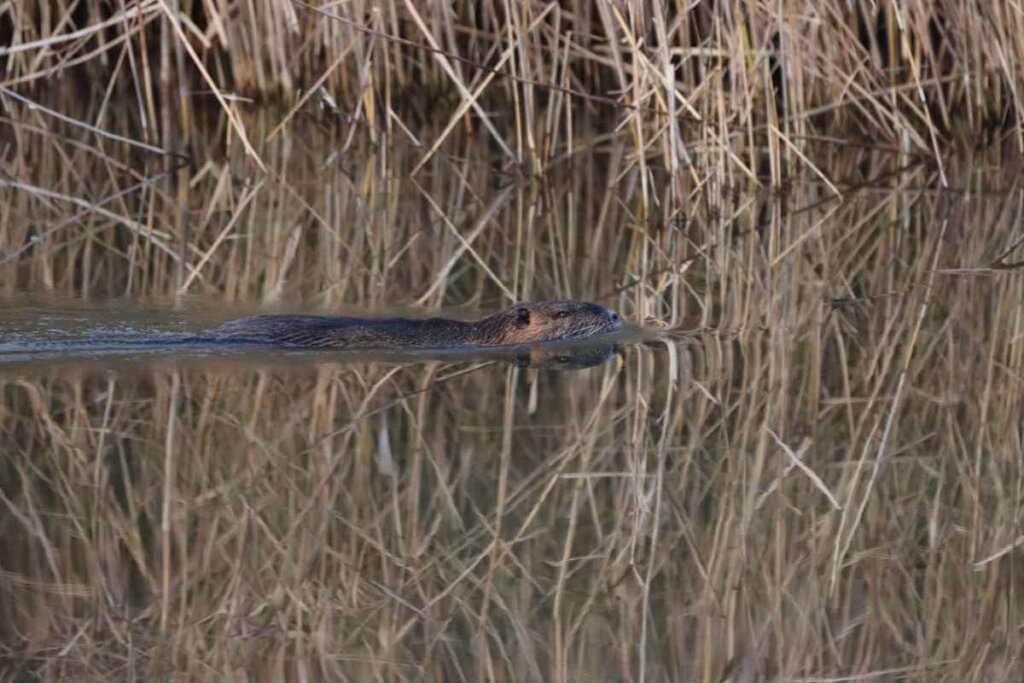*FYI - this post may contain affiliate links, which means we earn a commission at no extra cost to you if you purchase from them. Also, as an Amazon Associate I earn from qualifying purchases. Check out our Privacy Policy and Disclosure for more info.
The German state of Saxony-Anhalt contains the highest concentration of UNESCO World Heritage Sites in the country, so there is no shortage of exciting things for visitors to discover!
Saxony-Anhalt is renowned for its rich cultural heritage, even though it was technically only created after WWII. While its seven world heritage sites are big drawcards, there is plenty more to explore beyond those spots.
In this list of beautiful places to visit in Saxony-Anhalt, we’ll be sharing some of our favorite destinations in this stunning state, including the most beautiful cathedrals, castles and architecture.
We hope you enjoy our recommendations, and be sure to let us know in the comments if there are any Saxony-Anhalt must-sees you would add to our list!
1. Die Gruene Zitadelle
Die Gruene Zitadelle (the Green Citadel) is a building in Saxony-Anhalt’s state capital Magdeburg that deserves its own separate section as it is just so incredible!
As the last work by Austrian architect and artist Friedensreich Hundertwasser, Die Gruene Zitadelle is easily one of the most visited Saxony-Anhalt tourist attractions.
If you’re wondering why it’s called a ‘green’ citadel when it’s very clearly pink, well that’s because the building features a roof covered in trees, flowers and grass!
Hundertwasser was approached by a housing cooperative to renovate a concrete highrise and while he died before the project was complete, the finished result is amazing. Inside are 55 individually designed apartments for living or business, as well as shops, a hotel, a theatre and a kindergarten.
It’s well worth a trip to see this eclectic building with golden baubles on top from the outside but we also recommend heading inside to really experience this architectural delight.
The artHOTEL inside is also the only hotel in Germany located in a Friedensreich Hundertwasser building, so if you’re looking for a unique place to stay in Magdeburg, then this is a spot to add to your list!
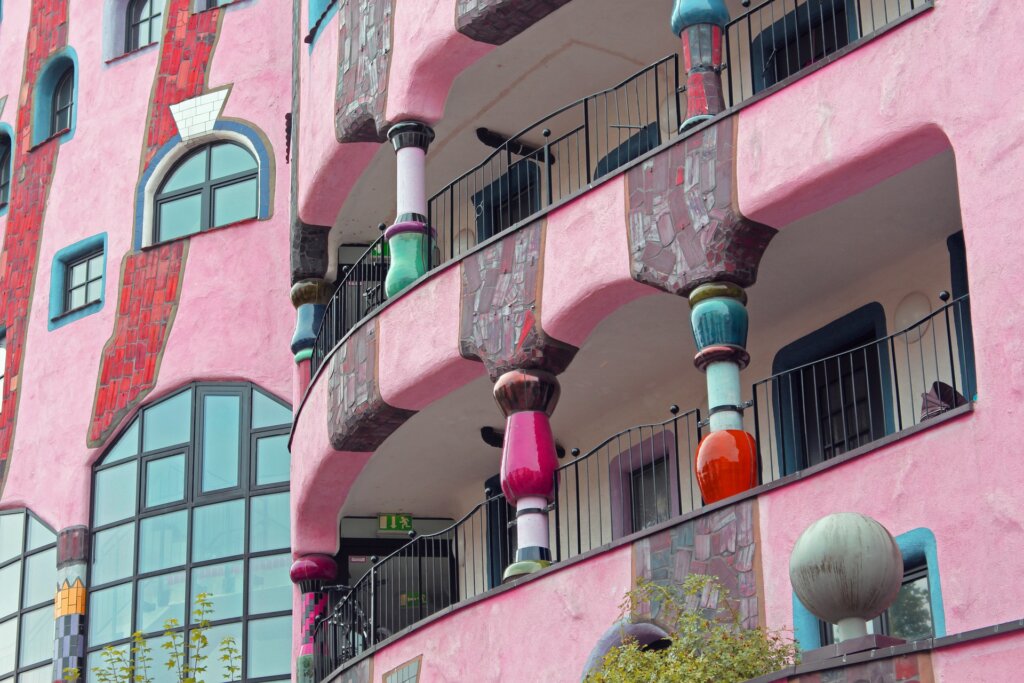
2. Magdeburg
Aside from the Green Citadel, the state capital of Magdeburg is definitely one of the best places to visit in Saxony-Anhalt, with many interesting things to see and do.
One of the most famous sights in Magdeburg is the city’s cathedral, where Otto I, the first-ever Holy Roman Emperor, is buried. It’s also the tallest church in Eastern Germany and is known as the first Gothic cathedral in Germany as well.
While the city of Magdeburg suffered intense periods of damage during its history (it was sacked by the Catholic League in 1631 and heavily bombed during WWII), today the city’s architecture is a fascinating mix of old and new, particularly since it has become a hub of science and research, with two universities.
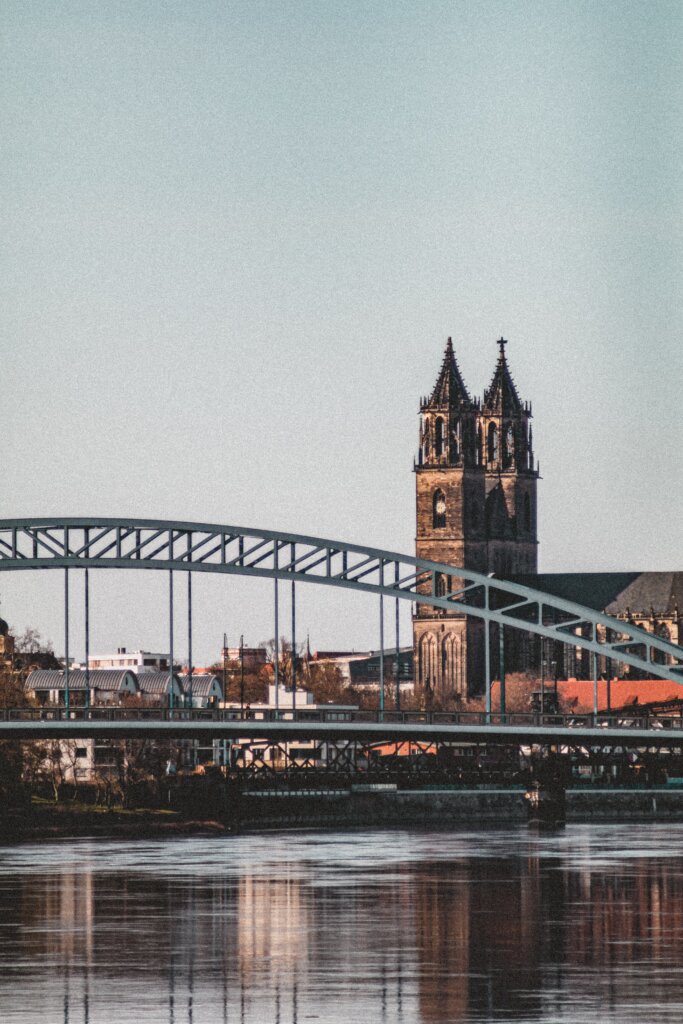
3. Wernigerode
Wernigerode is a charming medieval city, and one of the most beautiful places in Saxony-Anhalt for those seeking some classic fairytale charm.
The cityscape of Wernigerode is filled with half-timbered houses and cobblestone streets, watched over by the stunning Wernigerode Castle (pictured below). If you love visiting fairytale castles, this one also offers a choice of reaching it by a hike through the forested hills or a ride on a little motorised train!
Top sights in the romantic Old Town of Wernigerode include the impressive Rathaus (Town Hall), which features soaring towers, Renaissance bay windows, stained glass, intricate frescoes, and wooden sculptures. We also suggest a visit to the folklore museum housed in Wernigerode’s tiniest house, called the Kleinstes Haus.
Additionally, Wernigerode is home to a popular aviation museum and a lovely miniature park filled with scale models of Wernigerode Castle, Blankenburg Castle, Harz Railway, the Brocken peak, and more.
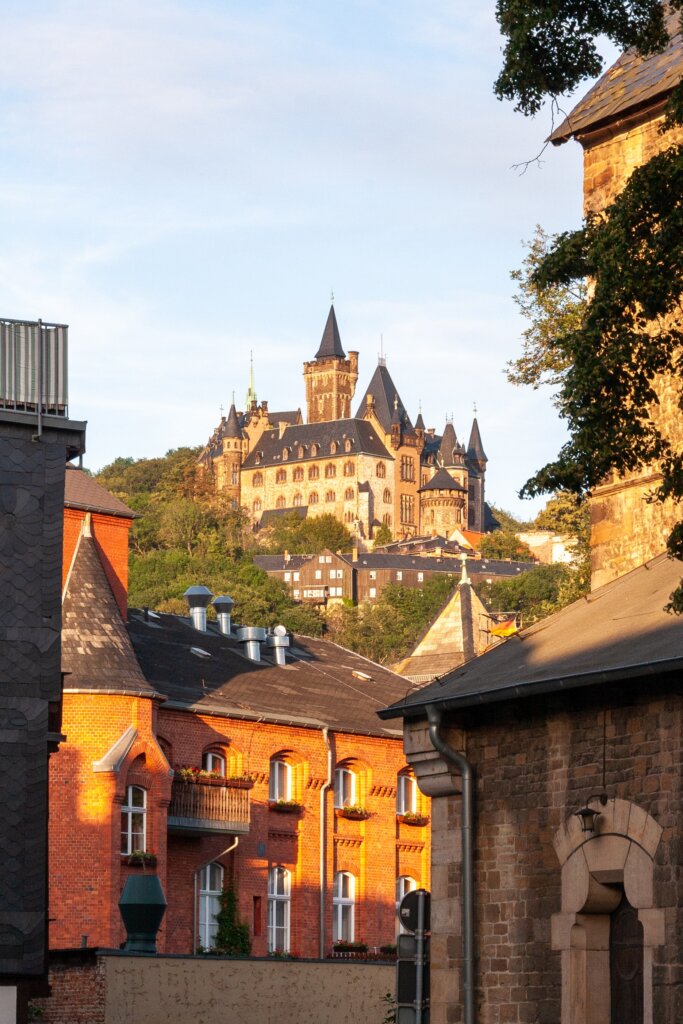
4. Quedlinburg
Quedlinburg is just one of the state’s UNESCO World Heritage Sites, but it’s nonetheless one of the best Saxony-Anhalt attractions worth visiting.
The old town centre is made up of cobbled alleyways, and beautiful timber-framed houses, overseen by the hilltop abbey of St. Wiperty and Quedlinburg Castle (pictured below).
It is this well-preserved area that was added to the World Heritage list, as the buildings demonstrate Romanesque architecture from the 10th and 11th centuries.
Aside from wandering around this town that looks like it stepped out of a fairytale, Quedlinburg is a great base for exploring the Harz Mountains via the narrow gauge railway, as well as trying some of the regional delicacies offered in local restaurants.
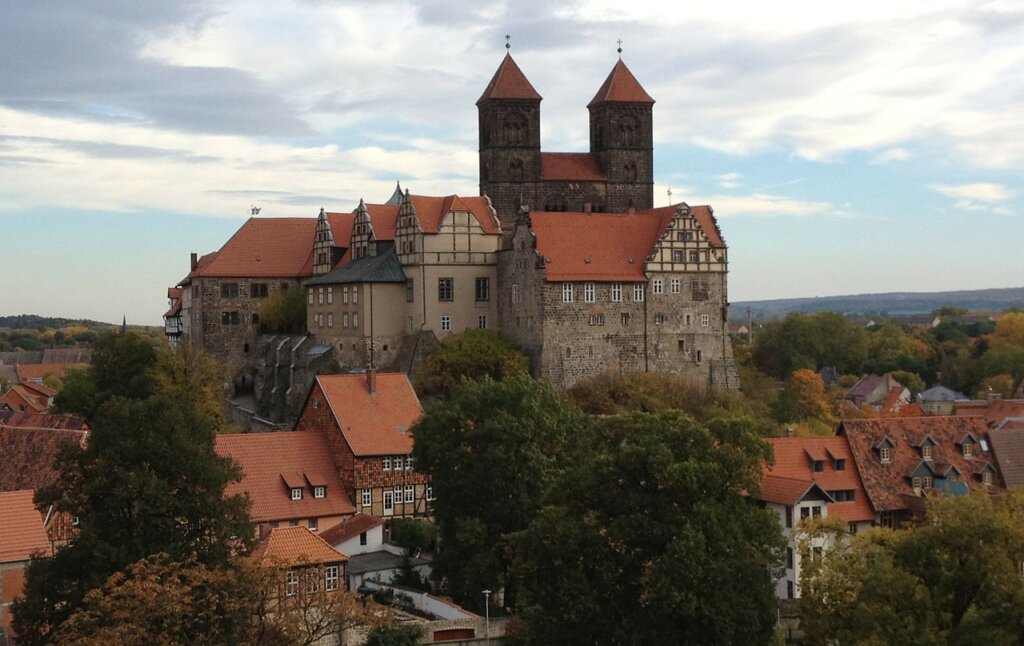
5. Garden Kingdom of Dessau-Wörlitz
If you enjoy pretty gardens then the Garden Kingdom of Dessau-Wörlitz is one of the best Saxony-Anhalt places to visit.
This ‘garden kingdom’ is another one of the UNESCO World Heritage Sites found in Saxony-Anhalt, and a stunning example of an 18th-century landscape park. It’s a BIG park, spanning 142 square kilometres filled with flower beds, meadows, a lake, several ponds which are connected by canals, dreamy wooden bridges as well as several chalets and palaces.
Heavily influenced by the Age of Enlightenment and the European travels of its creator, Duke Leopold III of Anhalt-Dessau, the park even contains an artificial volcano, pictured below next to the red villa.
PRACTICAL INFORMATION FOR VISITING: The park is open year-round for free (barring extreme bad weather) but you will need to purchase tickets for any of the buildings. Check out the website for all the individual prices and opening times.

6. Harz National Park
One of the most popular (and stunning) natural places to visit in Saxony-Anhalt is the Harz National Park and mountain range.
Harz National Park actually covers parts of Saxony as well, although the highest point, Mount Brocken, is part of Saxony-Anhalt. Ambitious hikers can climb all the way to the peak at 1,141 metres (3,743 ft) high, or ride the Schmalspurbahn for a more leisurely way to experience the panoramic views.
Of course, the Harz National Park is a wonderful area to partake in skiing and other snowy pursuits in winter, but if you time your visit for the end of April you could also take part in the magical Walpurgisnacht festival. This is a pagan festival to celebrate the arrival of spring, featuring fantastic events throughout the Harz mountains with people dressing up as witches and devils!
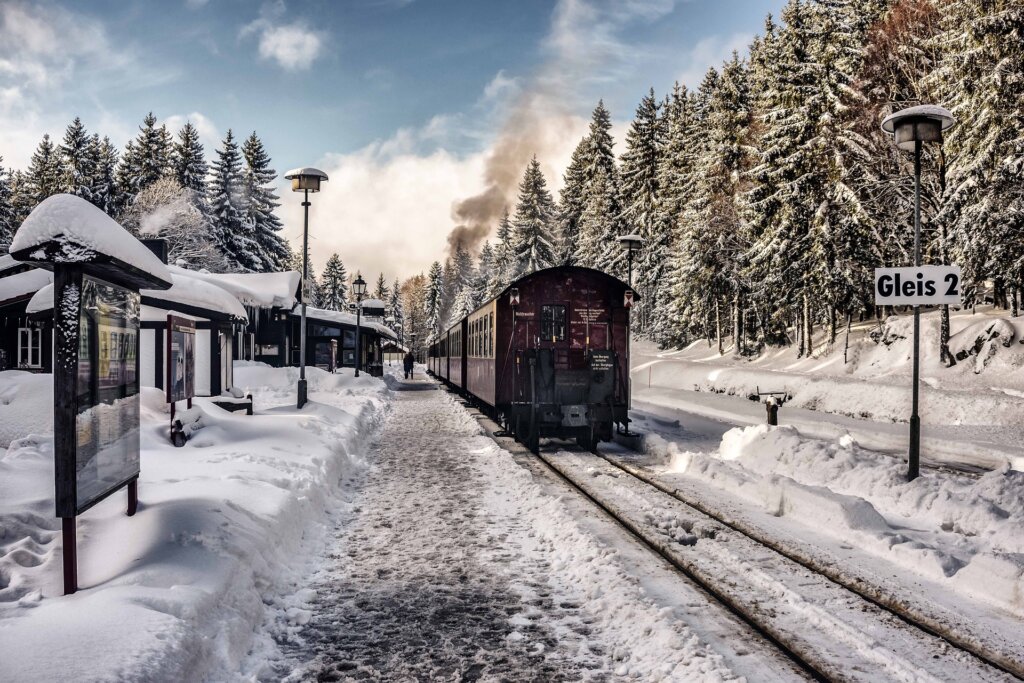
7. The Saale-Unstrut Wine Region
As the northernmost wine region in Germany (and the world!), the Saale-Unstrut Wine Region features around 1,690 hectares of vineyards with a historical wine-making tradition going back more than ten centuries.
Named for the Saale and Unstrut Rivers, many of these vineyards are planted on the steep riverbanks, with vines being produced as far back as AD 998. While the wines produced here are excellent, you may have never heard of them since they’re usually consumed by the locals of this small region.
So if you want to try some of the dry, lively wines with typical fine fruitiness that are produced here you will probably need to visit for yourself! The cities of Merseburg, Freyburg and Naumberg are all great spots to base yourself for a journey of wine discovery in the region.
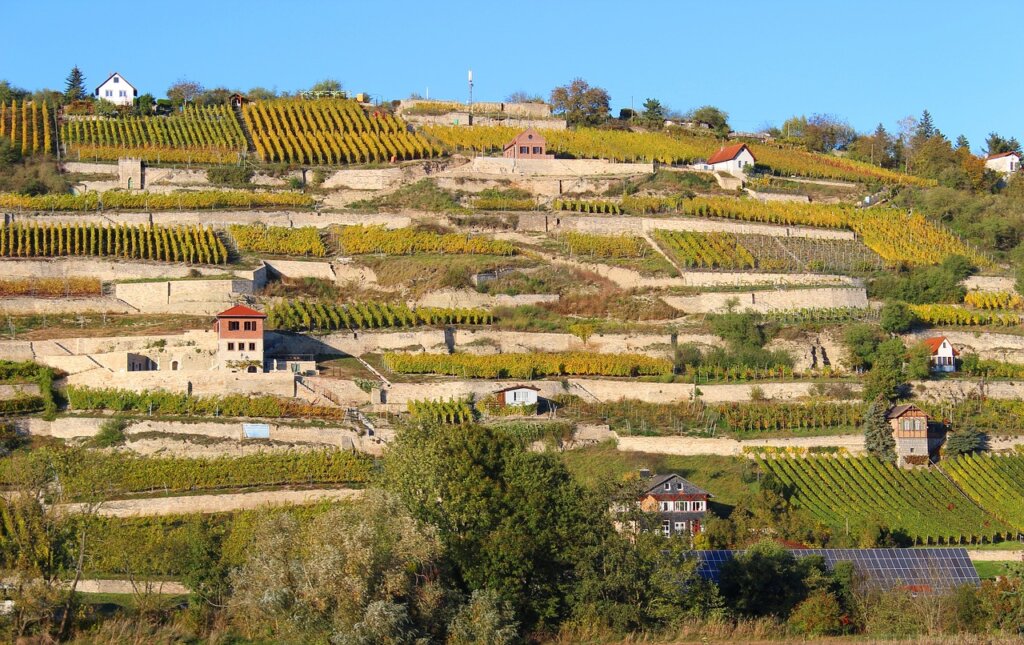
8. Wittenberg
The city of Wittenberg is most famous for its connection with the German priest, theologian, author and hymn-writer Martin Luther, who was an important figure in the Protestant Reformation.
There are many buildings and monuments in Wittenberg dedicated to Martin Luther, which together are another UNESCO World Heritage Site in Saxony-Anhalt. The Lutherhaus Museum is located inside the Augustinian monastery where he lived and is the ideal first stop to learn about his life and work.
Both Martin Luther and his collaborator Philipp Melanchthon are buried inside Wittenberg’s Castle Church, where Martin Luther is said to have nailed his 95 theses to the door in 1517. Towering impressively over the beautiful Market Square, the Church of St Mary (seen below) is also where Martin Luther married his wife Katharina von Bora.
Beyond Luther-specific sights, Wittenberg is also home to another epic Friedensreich Hundertwasser building, the Luther-Melanchthon grammar school which is quite similar in style to the Green Citadel in Magdeburg.
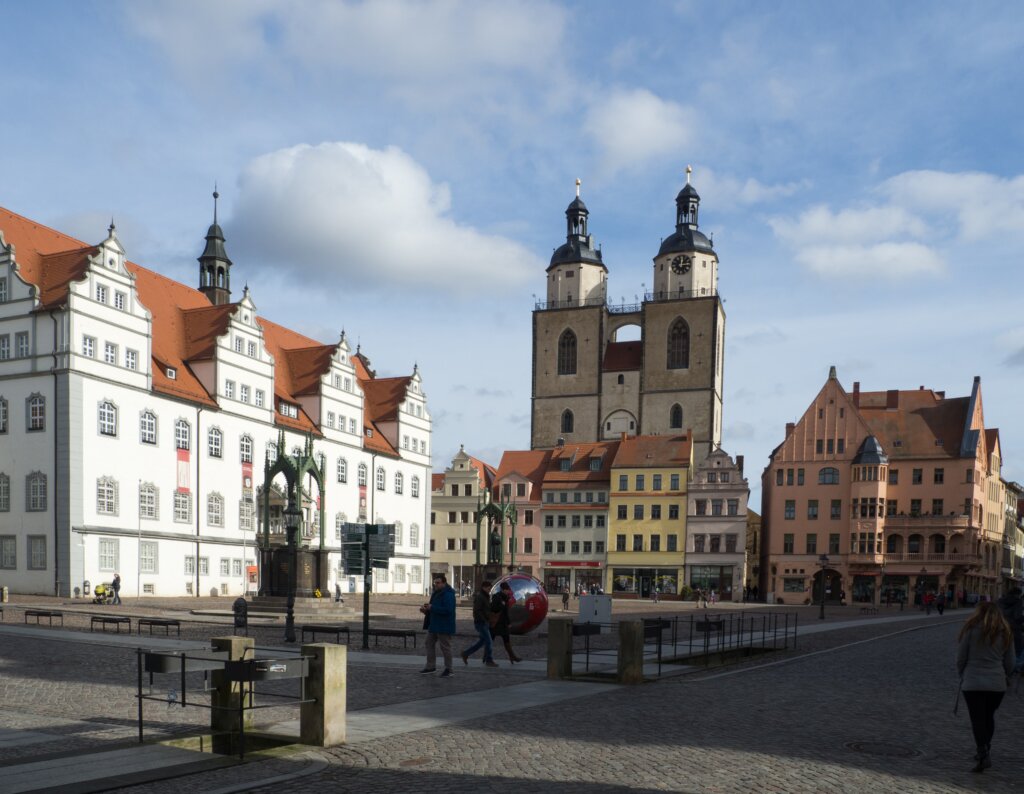
9. Burg Falkenstein
If you’re into castles and fortifications, one of the most beautiful things to see in Saxony-Anhalt is the impressive fortress of Burg Falkenstein.
Built between 1120 and 1150, Burg Falkenstein rises up majestically from a hill surrounded by protected forests. This fortified castle has never been captured and visitors can explore inside to see how well designed it was, even at centuries old!
The castle museum brings the past to life with many rooms furnished from different eras and if you’re very lucky you might even get to see a falconry show in the castle courtyard.
There’s also an on-site restaurant and beer garden which serves traditional ‘knightly’ food, as well as fun events organised for children during school holidays.
PRACTICAL INFORMATION FOR VISITING: It costs €6.50 for adults and €4.50 for children. Burg Falkenstein is open every day between April and October from 10am until 6pm, and Tuesday – Sunday between November and March, from 10am until 4.30pm. It’s a bit of a walk from the car park to the castle but there is also a shuttle service, check the website for more info.
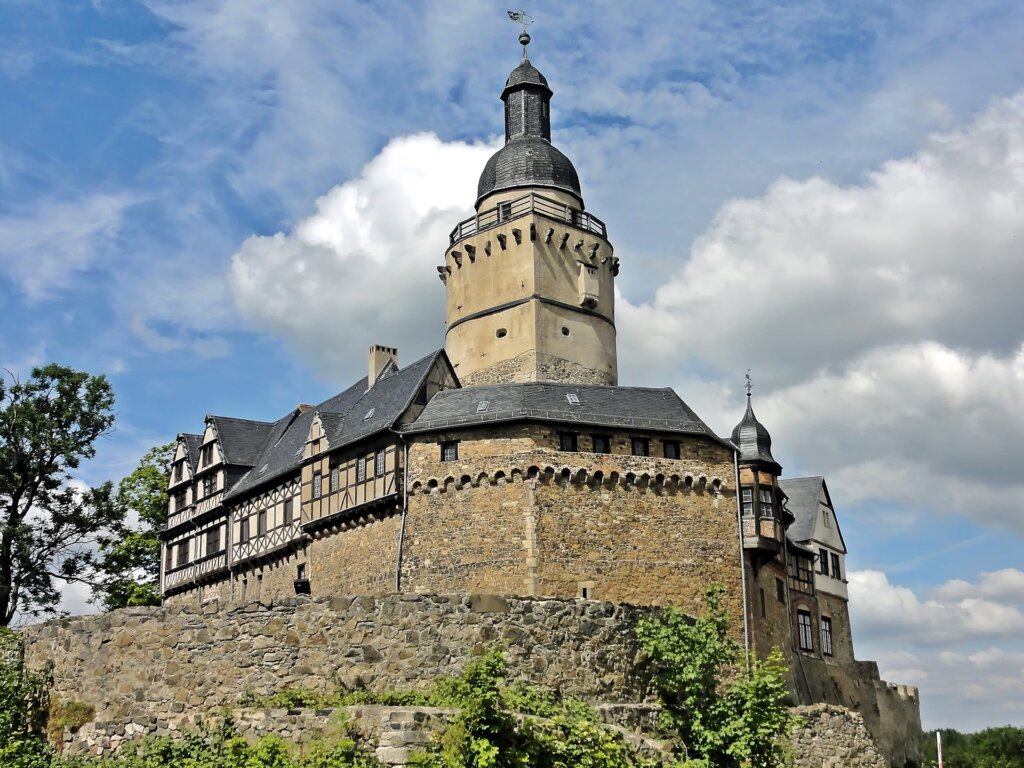
10. Middle Elbe UNESCO Biosphere Reserve
While most of the UNESCO World Heritage Sites in Saxony-Anhalt focus on historical monuments, the Middle Elbe Biosphere Reserve is the best one for exploring if you want to get back to nature.
Covering 430 square kilometres, the Middle Elbe Biosphere Reserve is the largest protected area in Saxony-Anhalt. It’s very popular with tourists who are travelling by bicycle as there are multiple cycle paths designed to showcase the park, as well as special ‘bed and bike’ accommodation options.
There are also walking trails, bridle paths for horse-riding and many ways to have fun or get around on the water. The biosphere covers parts of the River Elbe and also the largest interconnected water meadow area of Middle Europe so there are plenty of opportunities for kayaking, canoeing, boating, etc.
Wildlife enthusiasts can also look forward to (possibly) spotting thousands of plant, bird, animal and insect species including beavers, cranes, wild geese and white-tailed eagles.
And, be sure to head to the Auenhaus information pavilion in Wörlitz to ensure you see the Elbe beaver in a special enclosure.
11. Halle (Saale)
Lastly, make sure you don’t miss out on the pretty city of Halle while planning which places to see in Saxony-Anhalt!
The Old Town is as charming as any in Germany, with medieval buildings including the Market Church of St Mary with four steeples and the Roter Turm (Red Tower). Together the tower and steeples of St Mary’s make up the iconic five towers of the Halle skyline.
Halle is also home to the oldest chocolate factory in Germany that’s still in use, the Halloren Chocolate Factory, that’s a must-visit for any chocoholics! The factory now also houses a museum about the history of chocolate and an incredible chocolate gallery where works of art have been made of chocolate.
Other places worth visiting in Halle include the Handel Haus museum in the building where the composer Handel was born, two different castles housing museums (one also houses a university!) and plenty of pretty gardens.
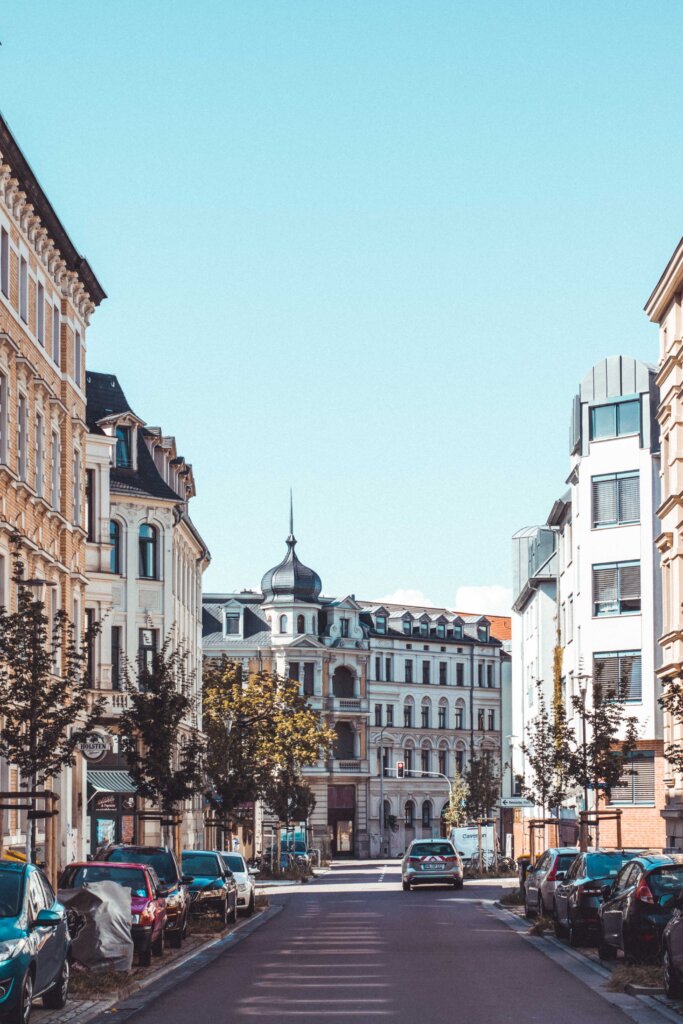
Did we miss any of your favorite places to visit in Saxony-Anhalt?
Let us know in the comments so we can add more to our list!

